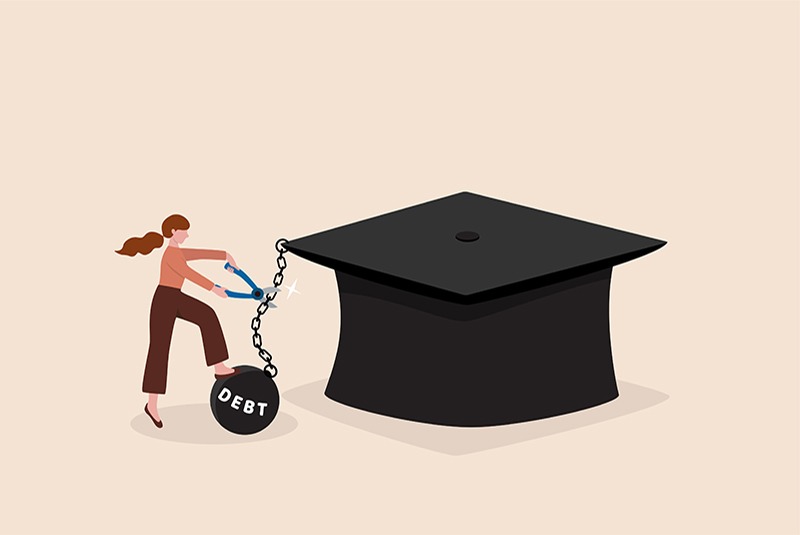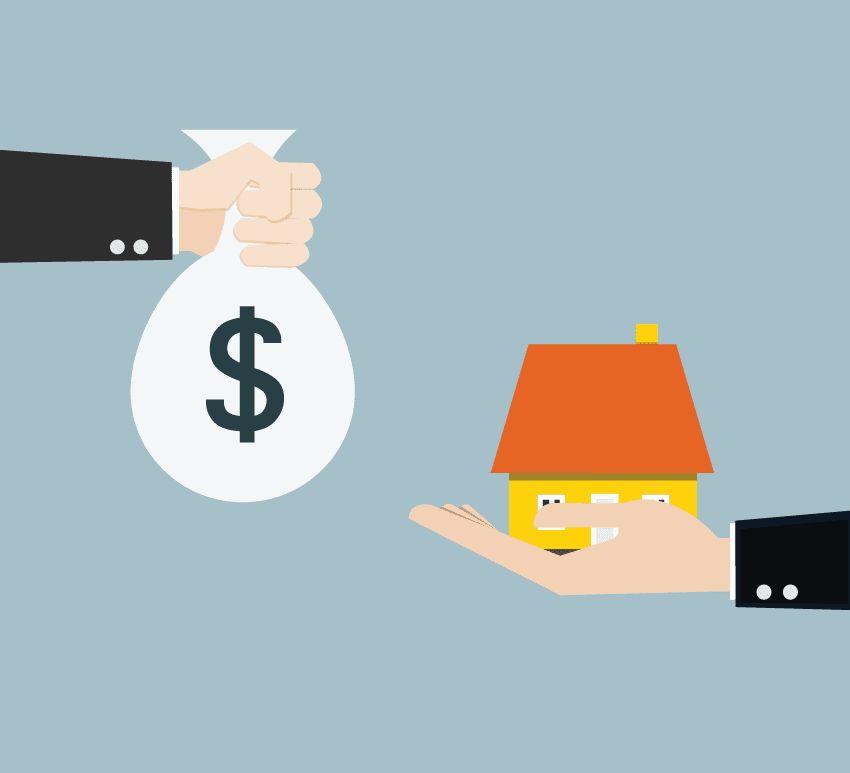Are you tired of feeling like you’re drowning in debt? Are you ready to take control of your finances and finally achieve financial freedom? If so, you’ve probably heard of Dave Ramsey and his famous “Baby Steps” program. But do they actually work?
Let’s get real for a moment. The truth is, there is no one-size-fits-all solution to financial success. What works for one person may not work for another. However, Dave Ramsey’s Baby Steps have helped millions of people get out of debt, build emergency funds, and start investing for the future.
.png)
What are the 7 steps of Dave Ramsey?
Baby Step #1: Save $1,000 for your starter emergency fund.
The first step in Dave Ramsey’s 7-step plan is to establish a starter emergency fund of $1,000. This fund serves as a safety net for unexpected expenses, such as car repairs or medical bills. By having this emergency savings fund in place, you can avoid relying on credit cards or loans when emergencies arise.
To build your starter emergency fund, consider ways to cut expenses and increase your monthly income elsewhere. You may need to temporarily give up some luxuries or find ways to make extra money, such as selling items you no longer need or taking on a side hustle. It may not be easy, but it will be worth it in the long run.

Once you have your emergency fund established, make sure to keep it in a separate account that is easily accessible but not too tempting to dip into for non-emergency expenses. Remember, the purpose of this fund is to protect you from financial emergencies, so only use it for its intended purpose.
By taking the first step of building your starter emergency fund, you’ll be on your way to financial security and peace of mind.
Baby Step #2: Pay off all debt (except your mortgage, if you have one) using the debt snowball method.
What is the the debt reduction snowball method, you ask? It’s a simple but effective strategy for paying off debt that involves listing all of your debts in order from smallest to largest and then paying off the smallest debt first, while making minimum payments on all of your other debts. Once that smallest debt is paid off, you move on to the next smallest debt and repeat the process until all of your debts are paid off.

Not only does your house using the debt to snowball method help you build momentum as you see your debts disappear one by one, but it also allows you to free up more money each month to put towards your remaining debts. And once you’ve paid off all of your debts (except your mortgage), you’ll be in a much better position to start building wealth and investing in your future.
Baby Step #3: Save three to six months of living expenses in a fully funded emergency fund.
When it comes to financial planning, there’s one step that often gets overlooked – building an emergency fund. While it’s not the most exciting part of money management, it’s essential to have a safety net in place for unexpected situations.
This fully funded emergency fund is like a financial shield, protecting you from the unexpected curveballs that life’s bigger surprises sometimes can throw your way.
Think about it – without emergency savings fund what would you do if you suddenly lost your job, had a medical emergency, or your car broke down? Without an emergency fund, you might have to rely on credit cards, borrow money from friends and family, or worse yet, dip into your retirement savings.

But with a fully funded emergency fund, you’ll have peace of mind knowing that you can cover your expenses and stay afloat during tough times. And the best part? You won’t have to pay off your home or worry about going into debt or putting your financial goals on hold.
So, how do you get started with Baby Step #3? It all starts with creating a budget. From there, you can start setting aside money each month until you reach your goal of three to six months’ worth of expenses.
Baby Step #4: Invest 15% of your household income in a retirement account.
Investing in your future is crucial, and it’s never too early to start. Yes, you read that right – 15%! Now, I know what you might be thinking. “That’s a lot of money to put away each month!” But trust me when I say that this step is essential to securing your financial future.
Think about it: You work hard to earn a living, so why not make your money work hard for you? By investing in a retirement account, you’re essentially allowing your money to grow and multiply and pay cash off over time. Plus, depending on the type of retirement account you choose, you could benefit from tax advantages and employer matching contributions.

But let’s be real here. Investing can seem overwhelming, especially if you’re not sure where to start. That’s where I come in. As a seasoned copywriter and storyteller, I’m here to help you navigate the world of investing and make it as simple as possible.
So here’s the deal. Start by researching the different types of retirement accounts available to you. There are traditional IRAs, Roth IRAs, 401(k)s, and more. Each account has its own set of rules and benefits, so it’s important to do your homework and figure out which one is right for you.
Baby Step #5: Save for your children’s college fund.
Investing in your children’s education is one of the most significant investments you can make as a parent. The cost of college education is skyrocketing, and it is crucial to start saving early. Baby step #5 is all about preparing for your children’s future by setting up a college fund.
Think of it as a gift to your children, one that will give them the opportunity to pursue their dreams without the burden of debt. It’s an investment that will not only benefit your children but also your entire family. With a college degree, your children will have access to better job opportunities, higher salaries, and a brighter future.

But let’s face it, saving for your children’s college expenses can be challenging, especially with all the other expenses that come with raising a family. That’s where Baby Step #5 comes in. By breaking down the goal into manageable steps, you can start saving today and ensure that your children have a bright future.
Here’s how you can make it happen: Start by researching college costs and estimating how much you’ll need to save. Then, set up a separate savings account dedicated to your retirement fund or children’s college fund. You can also explore investment options that offer tax benefits, such as 529 plans.

Remember, the earlier you start, the more time your money has to grow. By saving consistently and staying committed to the goal, you’ll be able to provide your children with the gift of education and a brighter future.
Baby Step #6: Pay off your mortgage early.
Are you tired of being stuck with a never-ending mortgage? Look no further than Baby Step #6: paying off your mortgage early.
With this simple yet powerful step, you can eliminate the biggest expense in your budget and become debt-free faster than ever before. Imagine the peace of mind that comes with knowing you truly own your home, without any looming payments hanging over your head.

But how do you get started? It’s all about making small, consistent progress. By adding even a little bit extra to your mortgage payment each month, you can drastically reduce the amount of interest you pay over time and cut years off your repayment timeline. And if you really want to supercharge your efforts, consider taking on extra work or finding ways to increase your household income in retirement, so you can put even more towards your mortgage.
Baby Step #7: Build wealth and give.
Congratulations on making it to Baby Step #7! Building wealth and giving generously are two of the most fulfilling experiences you can have in life. In this final step, you will be able to take all the knowledge and skills you have acquired along your financial journey and put them into practice.
To build wealth, you need to be intentional with your money. This means creating a budget, saving aggressively, and investing wisely. The key is to focus on building long-term wealth rather than short-term gains. This requires patience, discipline, and a willingness to take calculated risks.

So, how can you build wealth and give generously? It all starts with a mindset shift. Rather than focusing solely on your own financial success, start thinking about how you can use your wealth to make a positive impact on the world. With this perspective, you’ll find that building wealth and giving generously go hand in hand.
Remember, Baby Step #7 is not the end of your financial journey, but rather the beginning of a new chapter.
How long do the Dave Ramsey Steps take?
The answer is: it depends. Each person’s financial situation is unique, so the time it takes to complete the steps will vary.
However, on average, it takes about 18-24 months to complete all seven steps. That may seem like a long time, but imagine the peace of mind and financial stability you’ll have once you’ve completed them.

And the best part? You don’t have to do it alone. Dave Ramsey has a wealth of resources available to help guide you through each step, including his best-selling book “The Total Money Makeover” and his popular radio show.
Why are Dave Ramsey baby steps outdated?
While they may have been revolutionary at the time, they are now outdated and ineffective in today’s fast-paced world.
Let’s face it, the economy has changed, and so have our financial needs. Ramsey’s strict approach of paying off debt and building an emergency fund may have worked in the past, but it fails to address the complexities of modern personal finance now. In today’s world, we need more than just a one-size-fits-all approach.

It’s time to think outside the baby steps and start using strategies that are tailored to your specific needs. Whether it’s investing in cryptocurrency, starting a side hustle, or developing a passive income stream, there are countless ways to build wealth and achieve financial freedom.
So don’t let Dave Ramsey’s baby steps hold you back. Take control of your finances, be creative, and explore new opportunities to grow your wealth. With the right mindset and a willingness to learn, you can achieve anything you set your mind to.